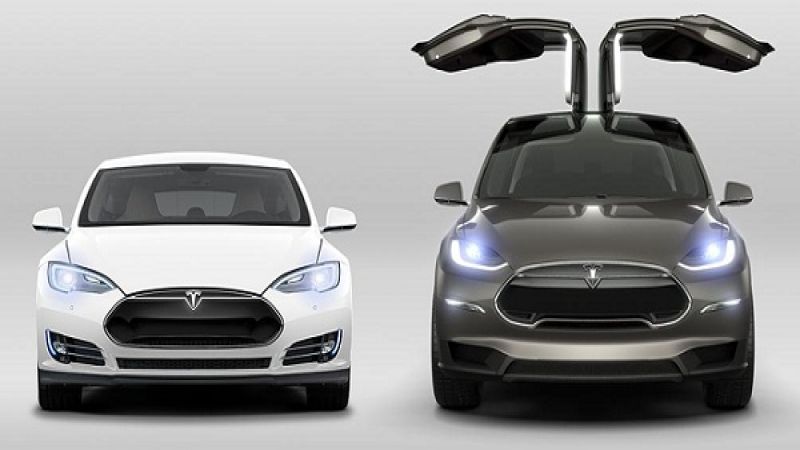Tesla Motors causes a great deal of excitement when it reports its quarterly sales and financial numbers, particularly because the automaker does not break out monthly sales figures. The news from Q3 is largely positive, with a dose of setback mixed in.
Almost according to plan
Deliveries for the quarter totaled 7,785, just under the company’s guidance of 7,800. However, the Fremont factory shutdown and retooling that didn’t go quite as planned – and cost Tesla nearly a month of production, according to the shareholder letter – resulted in just 7,200 units produced in the third quarter.
For the year, Tesla adjusted its guidance downward from 35,000 deliveries to 33,000. The decline is largely attributed to the lost production in Q3 as well as the added complexity of all-wheel-drive and autopilot. This is not good news, but if Tesla delivers 11,179 cars in Q4 to hit its revised target, 2014 can still be counted as a very successful year indeed.
By the end of 2014, Tesla expects the Fremont plant will be capable of churning out 1,000 Model S sedans every week. By the end of 2015, production capacity is anticipated to reach 2,000 Models S and X weekly.
Demand remains strong
Tesla is highly confident that demand for Model S, bolstered by the introduction of all-wheel-drive and autopilot features, will support a cool 50,000 deliveries in 2015 for a 50% increase over this year. Musk estimated that just over half of 2015 production will be for North America, with the remainder split between Europe and Asia. All indications are that European demand for Model S is still slower than hoped, but AWD in the U.S. will pick up the slack.
Tesla continues to reiterate that they are production, and not demand, constrained. “Being unable to increase production fast enough, not lack of demand, is a fair criticism of Tesla,” the shareholder letter said.
Progress on the Gigafactory continues apace, as workers have begun pouring the concrete foundation for the massive facility. Unlike most Model X news lately, the Gigafactory is actually ahead of schedule – Tesla indicated it is “making good progress toward first cell production in 2016,” which is earlier than initially expected. This is important, as a fully functional Gigafactory removes one more variable that could delay Model 3 introduction.
More delays for Model X
At the rate Model X is going, however, Model 3 may not be ready for the Gigafactory until 2018. The crossover is now officially delayed until the third quarter of 2015, which represents nearly a full two years after it was initially (ambitiously) promised. Musk said in the conference call with analysts that “the X is going to be something quite special, but it’s hard to engineer and hard to produce.”
This is not the first time we have heard statements like this from Musk, and it is getting rather old. He further clarified that a Model X order placed today would be delivered in early 2016; considering the 20,000+ names already on the waiting list, we can now expect production to begin to ramp up in late summer or early fall next year. Tesla says it will be ready for Model X when production does begin at last, however, and should ramp up quickly to meet demand as fast as possible.
Finally, for those interested in the financials, Tesla marginally beat Wall Street expectations by reporting a small non-GAAP profit of $3 million with $932 million in revenues, up 55% year-over-year. Some other interesting numbers: an unexpected $76 million in ZEV credit sales, $31 million from its powertrain deal with Daimler, and $119 million in non-GAAP R&D expenses, up 28% from the second quarter thanks to engineering work on the all-wheel-drive and autopilot systems as well as Model X.
On the whole, it’s a somewhat mixed bag of news from Tesla. The expectations for Model S are encouraging, and should quiet any rumblings about declining demand for now. The Model X news is the opposite of encouraging, but is not altogether unexpected. We’d take a trouble-free but delayed rollout over a recall-plagued early introduction any day.











